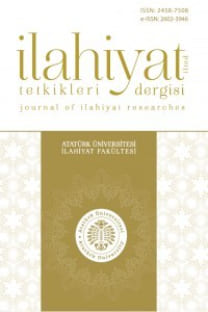Kaos Düzensizliği: Hâmilik, Mücadele ve Memlûk Sosyo-Politik Kültürü 1341-1382
Ghent Üniversitesi öğretim üyeleri arasında yer alan Jo Van Steenbergen’in kaleminden çıkan bu çalışma Memlûk sosyal ve politik tarihi açısından son derece önemlidir. Müellif bu eserde genel hatlarıyla Memlûk Devleti’nin klasik devlet teşkilatından kopmalarının akabinde ortaya çıkan siyasi boşluğun (kaos) nasıl doldurulmaya çalışıldığını, emir-i mîe adını verdiğimiz sultandan sonra en yetkili âmirlerin nasıl bir politik güç edindiklerini, ulema sınıfının siyaset sınıfıyla nasıl bir ilişkisi olduğunu ve bu ilişki çerçevesinde ulema sınıfının siyaset sınıfına nasıl bir meşruiyet sağlama gayreti içerisinde olduğunu ele alıp tartışmıştır. Üç bölümden oluşan eserde; meşru iktidar, etkin güç ve kaosun düzensizliği hususunda ayrıntılı bilgiler verilmiştir. Müellif öncelikle meşru iktidardan ne anladığını dönemin kaynakları aracılığıyla ifade ederek, Memlûk devlet geleneğinde kölemenlerin (memlûk) yerinin ne olduğunu, Mısır özelinde nasıl bir değerleri olduğunu ve bu askerlerin zamanla iktidarı mutlak anlamda ele geçirmeleriyle birlikte halk üzerinde nasıl bir meşruiyet sağladıklarını tartışmıştır. Bu çerçevede Steenbergen, kölemenlerin Memlûk Devleti’ndeki tarihçesine kısaca değinerek, onların Salih Eyyûb (ö. 1249) tarafından orduya alınıp “seçkin” bir asker yapıldıklarını izah etmeye çalışmıştır. Ardından Bahrî memlûklerin iktidarı ele geçirmede nasıl bir rol oynadığını, bir taraftan Moğollarla diğer taraftan da Frenklerle mücadele ederek halk tarafından nasıl kabul edildiklerini ele almıştır. Bu noktada müellife göre ilk etapta sadece “hükümdarın koruyucuları” olarak anılan Bahrî memlûkleri, Frenk ve Moğollarla yaptıkları başarılı savaşlar neticesinde “İslâm’ın koruyucuları” olarak anılmış ve kabul edilmişlerdir. Steenbergen’e göre memlûk/kölemen hizipleri kurulmadan bir emirin ya da sultanın hâkimiyetinden söz edilemez. Dönemin seçkin emirleri tarafından kurulan hizipleşmeleri harekete geçiren şey; hâmilik, (patronage) nimet elde etme (tayin-terfi/ikta) ve makbulü’l-kelime olma arzusuydu. Her hizip hâkimiyet kurmak için birbirleriyle mücadeleye girmekten geri kalmamıştır.
Order Out of Chaos: Patronage, Conflict And Mamluk Socio-Political Culture 1341-1382
The work of Jo Van Steenbergen, one of the lecturers of the University of Ghent, is extremely important in terms of Mamluk's social and political history. In this work the writer explains in general how the political void (chaos) arising in the wake of the breakup of the Mamluk state from the classical state organization is filled, how the political authority of the most authoritarian rulers after the sultan who gave his name to the emir-i mîe, and discussed how the class of ulema in the context of this relationship is striving to provide legitimacy to the political class. In the work composed of three parts; detailed information on legitimate power, effective force and disorder of chaos. The author first discussed what he understood from the legitimate power through the sources of the time and discussed what the place of the humans in the Mamluk state tradition is, what kind of values they have in Egypt and how they have provided legitimacy to the people in time with their absolute seizure of power. In this context, Steenbergen touched briefly on the history of the Mamluks in the state and tried to explain that they were made army by Salih Ayyub (d.1249) and they were also made an "elite" soldier. Then, he dealt with Bahrî mamluks how the people (Mamluks) played a role in conquering power and how they were accepted by the people, fighting against the Mongols on one side and the Frenkles on the other. At this point, according to the author, Bahrî mamluks, which were only called "guardians of the monarch" in the first place, were recognized and accepted as "protectors of Islam" as a result of the successful wars they had with Frenk and Mongols. According to Steenbergen, it is impossible to speak of the dominance of an emir or sultan before the establishment of the civil/monarchical lines. What drives the factionalities established by the elite emir of the turn; patronage, to obtain blessings (designation-promotion / ikta), and wanted to be makbulu’l-kalim (cretitable). Each faction is not back from entering the fight with each other to establish dominion.
___
- Jo Van Steenbergen, Order Out of Chaos: Patronage, Conflict And Mamluk Socio-Political Culture 1341-1382, Brill, Leiden 2006
